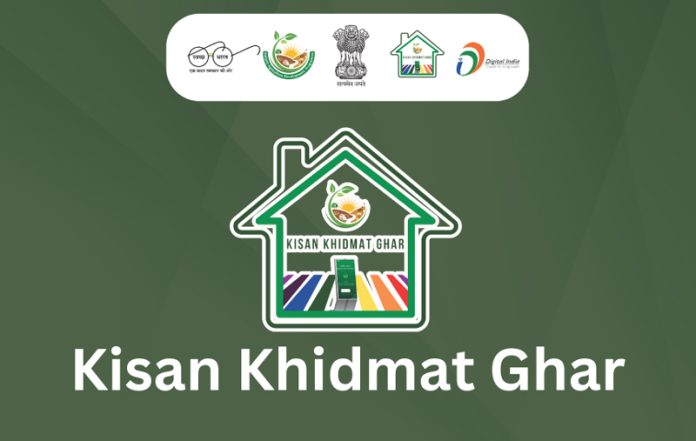The inauguration of 500 Kisan Khidmat Ghars (KKGs) across Jammu and Kashmir by LG marks a transformative step in the region’s agricultural landscape. This initiative, part of the Holistic Agriculture Development Program (HADP), aims to empower 13 lakh farmer families, including nearly 3 lakh vulnerable and marginal farmers. The establishment of KKGs envisioned as one-stop service hubs, signals a paradigm shift in how agricultural extension services are delivered in the UT. Agricultural extension services have historically struggled with issues of accessibility, especially in remote and underserved areas. The traditional model of extension services, reliant on a limited number of extension workers, often fails to reach the most marginalised farmers. The KKG initiative seeks to bridge this gap by bringing essential services directly to farmers’ doorsteps, leveraging modern IT systems to ensure efficient delivery. These centres will offer a range of services, from input supply and soil health monitoring to plant diagnostics and market intelligence. This comprehensive support structure is designed to enhance productivity and sustainability in farming practices.
This initiative is all about the integration of technology. The Kisan Khidmat Ghar mobile application, launched alongside the physical centres, is a significant innovation. This app will provide farmers with access to critical information and services, including credit support, crop price forecasting, decision support tools, and Government scheme applications. By harnessing the power of the Internet of Things, artificial intelligence, and real-time data analytics, the app aims to revolutionise decision-making processes for farmers, leading to more informed and timely agricultural practices. The successful implementation of the KKG initiative is a testament to the collaborative efforts of various stakeholders. The HADP Apex Committee, the Ministry of Electronics and Information Technology, the Bhaskaracharya National Institute for Space Applications and Geo-Informatics, and numerous agriculture and allied departments have played crucial roles. Their collective expertise and resources have enabled the creation of a robust infrastructure that promises to support farmers effectively.
The potential economic impact of this initiative is profound. By providing farmers with the tools and knowledge to improve their practices, the KKGs can significantly enhance agricultural productivity. This, in turn, can lead to higher incomes for farmers, contributing to overall economic growth in the region. Moreover, the initiative also has a substantial social dimension. Empowering farmers, particularly the marginalised, can lead to improved livelihoods and social stability. The initiative also fosters a sense of community and support among farmers as they engage with the KKGs and benefit from shared resources and knowledge. The launch of 500 KKGs is just the beginning. The planned expansion to 1500 centres by the end of the year underscores the administration’s commitment to transforming agriculture in Jammu and Kashmir. Sustainability is a key consideration, and the integration of technology plays a crucial role here. By continuously updating the services and tools available through the KKGs and the mobile application, the initiative can adapt to changing agricultural conditions and emerging challenges.
Despite the promising outlook, we need to address several challenges. Ensuring the consistent quality of services across all KKGs, particularly in remote areas, will be critical. The success of the initiative also hinges on effective training and capacity-building for both farmers and the staff operating the KKGs. Furthermore, continuous monitoring and evaluation will be essential to identify areas for improvement and to ensure that the initiative remains aligned with the evolving needs of farmers.
By integrating modern technology with traditional agricultural practices, this initiative aims to create a smart, inclusive, and sustainable agricultural extension system. The commitment of the UT Administration, supported by various stakeholders, is evident. These centres hold the promise of transforming the agricultural landscape of J&K, empowering farmers, and paving the way for a prosperous and sustainable future. The journey ahead will require continued dedication, innovation, and collaboration, but the foundations laid by this initiative offer a hopeful and inspiring vision for the future of agriculture in the region.
Trending Now
E-Paper


